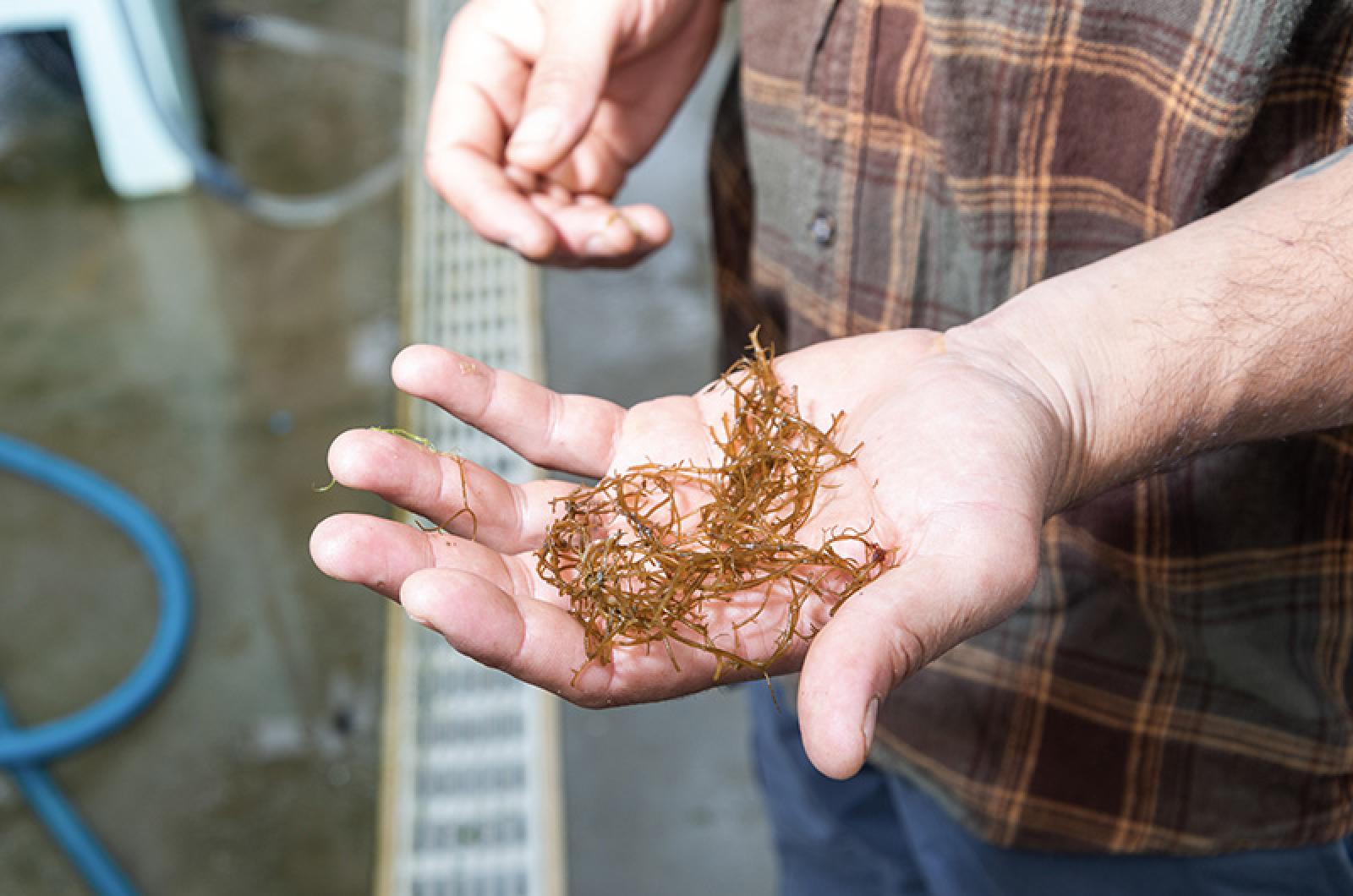The Hughes Hatchery at the northern tip of the Lagoon Pond in Oak Bluffs looks like it was decorated by a mad scientist with a warehouse of aquarium equipment. Towering tubes contain bubbling green and yellow fluid, while a blue elevated tub serves as a playground to baby scallops, fluttering in the water like toddlers learning to walk.
Along the right wall, among churning beakers of various color and opacity, there is a jug of clear water. In it, imperfect spheres of spiky auburn seaweed churn in the bubbler-induced turbulence.
It is gracilaria, a red algae used as food and as raw material for laboratory materials. Its cultivation is a multi-billion dollar industry, but it has never been brought to market on Island. With help from scientists on and off the Island, Greg and Dan Martino, owners of Cottage City Oysters, aim to change that.
Last year, the Oak Bluffs oyster company was awarded a grant from the Sustainable Agriculture Research and Education (SARE) program, to conduct research into the cultivation and marketing of gracilaria in the region.
“We were looking for a summer seaweed,” said Dan Martino. “We already grow kelp on the farm, but that’s a wintertime-only seaweed, and with climate change we are seeing shorter and shorter growing seasons each year. My guess is, in a decade, kelp won’t even grow here.”
Innovation-minded growers are usually prioritized for grant money, said Emma Green-Beach, executive director at the Martha’s Vineyard Shellfish Group. She has teamed up with Cottage City, helping them out with the technical aspects of the process, along with Dr. Emma Cross at Southern Connecticut State University.
But the innovation required to bring gracilaria to market is not just technical. Seaweed as food has historically had a negligible market in the U.S. It is governed by a kind of circular logic, Ms. Green-Beach explained: “People don’t eat it because they can’t buy it, because stores don’t stock it, because no one grows it, because people don’t buy it, and so on.”
A major component of the project will be increasing local awareness and interest in the seaweed as an ingredient. Cottage City will be giving free samples to farmers’ market customers, as well as distributing to Island chefs for culinary experimentation.
The seaweed is, of course, salty, with a mild oceanic flavor that stops short of fishy. “The texture is really great,” said Mr. Martino while crunching on an ocean-fresh piece, “put some vinegar and oil on it, and you have a chewy salad.”
So far, the garcilaria culture they selected has been grown in controlled conditions, under the watchful eyes of Mrs. Green-Beach and Nick Cranston, a recent regional high school graduate and recipient of a Vineyard Vision Fellowship, who will study marine biology at Tulane. It has been growing prodigiously and the Martino brothers hope to plant it out on lines alongside their shellfish this week. They hope too that the companion growing strategy will be beneficial to both crops.
A growing body of research indicates a positive relationship between seaweed cultivation and bivalve growth, according to Ms. Green-Beach. “Macro-algae take up excess carbon dioxide from the water” she explained, “which might otherwise make the ocean more acidic, and give the shellfish softer shells.” Seaweed, too, might benefit from the relationship since it can benefit from the ammonia that bivalves release as waste.
Aquaculture is a fickle thing, and the team anticipates mixed results in this first year of the grant process. They hope to scale up production next year, hopefully after a few chefs have developed a taste for the stuff.
“I think a lot of people love the idea of seaweed,” said Dan Martino. “There just isn’t any way to get it.”




Comments
Comment policy »